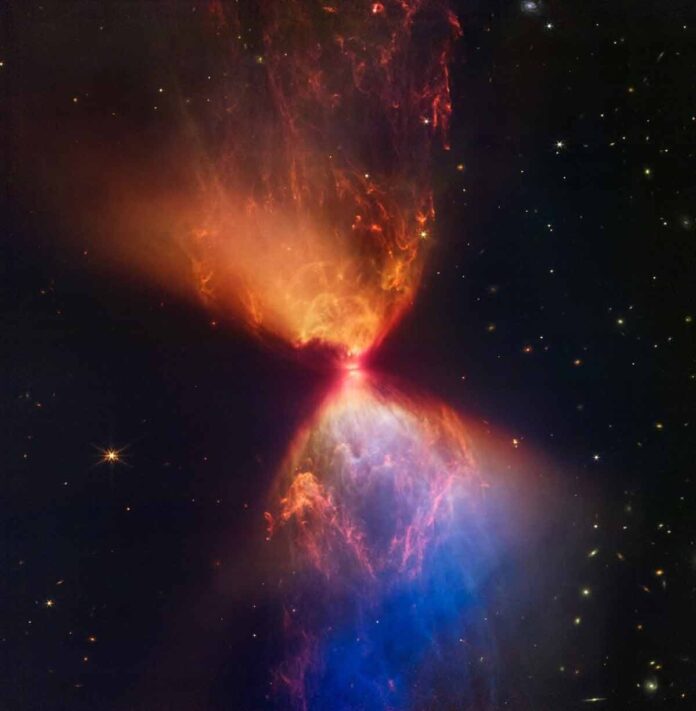The “fiery cosmic hourglass” of a dark cloud concealing a protostar was captured by the James Webb Space Telescope. These clouds are in the Taurus star-forming region and can only be seen in infrared light, making them an ideal candidate for Webb’s NIRCam. (Near-Infrared Imaging Camera)
The protostar, which is hidden from view, is in the hourglass’s “neck.” A protoplanetary disc is visible as a dark line cutting across the neck. The light from the star leaks through the disc on both sides, illuminating the cavities in the gas and dust.
The images also show filaments of molecular hydrogen being shocked by the material ejected by the protostar. Under normal conditions, stars would form throughout the cloud, but the protostar’s shocks and turbulence prevent this. As a result, the protostar dominates the region and consumes much of the material.
Despite its chaotic circumstances, this protostar, known as L1527, is only about 100,000 years old. It is classified as a class 0 protostar, which is the most primitive stage of star formation. This type of protostar, which is still cocooned in dark clouds of dust and gas, has a long way to go before it can be called a star.
It has a mostly spherical shape, but it is also unstable. It takes the form of a puffy clump of gas that is between 20 and 40% the mass of our Sun. Furthermore, the protostar does not yet generate its own energy through nuclear fusion of hydrogen, which is a necessary feature of stars.
However, as it approaches stable nuclear fusion, it will continue to gain mass and its core quill will gradually compress. This image, according to the Space Telescope Science Institute, which operates Webb, shows L1527 doing just that. The protostar’s dust cloud is composed of dense dust and gas that is being drawn to the centre. The temperature at its core will rise as it absorbs more gas and compresses further, eventually reaching levels required for nuclear fusion to begin.

